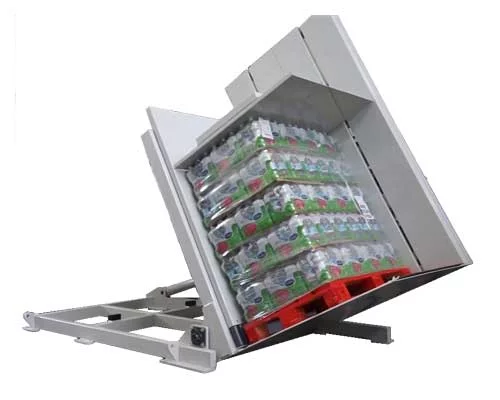How Has Freezing Revolutionized Food Preservation Methods?
Preserving food through freezing has become the linchpin of modern food storage, fundamentally transforming how we maintain the freshness of everything from succulent fruits to savory meats. This straightforward yet powerful process has woven itself into our daily lives, and with good reason. It offers a reliable safeguard, ensuring that a myriad of foods such as vegetables, pizzas, ice creams, and diverse meats like fish and beef retain their quality over time.
What Sparked the Frozen Food Storage Evolution?
The voyage of frozen food transport and storage began in the late 19th century, much like a serendipitous discovery akin to penicillin. In 1880, an inadvertent freezing episode during a meat shipment from Australia to Britain catalyzed a profound shift in the cold storage sector. This fortuitous event introduced freezing as a preferred method for safeguarding food during long hauls and storage. Fast forward, the practice of flash freezing ushered in a new era in the 20th century, marked by its proficiency in preserving specific foods.
How Do Temperature Dynamics Impact Food Quality?
Freezing halts bacterial growth, embodying a protective cloak for food when managed expeditiously and securely. Swift placement in a flash freezer diminishes the peril of contamination, thereby fortifying consumer safety—a primary reason behind the escalating popularity of rapid freezing in commercial food settings. In essence, freezing preserves the cellular integrity of living organisms, predominantly composed of water, by transforming it into minuscule ice formations. The crux lies in ensuring that these ice structures remain small, as larger formations risk damaging food quality upon thawing.

What Are the Commercial Freezing Techniques Adopted Globally?
Commercial food preservation has evolved over decades, presenting various methodologies, each with unique attributes and applications.
What Makes Air Freezing a Traditional Art?
Until the 1960s, air freezing was the sole method to chill commercial goods. In this process, cartons perched on pallets embrace strategic spacing, fostering optimal air flow through the interstitial spaces. Known as batch blast freezing, this method is a mainstay among refrigerated warehouses. A blast freezer, operating amidst frigid air, navigates food preservation through potent fans fostering rapid air currents across products.
How Do Tunnel Blast Freezers Enhance Storage Efficiency?
Tunnel blast freezing stands as a testament to enhanced cold storage efficacy, integrating continuous movement of pallets through varying temperature zones. This system optimizes storage density, leveraging minimal equipment while ensuring comprehensive airflow. Products journey through a systematic lane progression, experiencing efficient cold air immersion.
How Are Latest Cold Storage Technological Innovations Transforming the Scene?
Contemporary advancements have imbued freezing technology with increased vigor and cost-efficiency. Modern systems integrate powerful fans and pallet seals to generate negative air pressure, whisking chilled air at striking velocities through top-notch plenum designs. These improvements not only slash freezing durations but also mitigate energy consumption.
What Role Do Freezer Spacers Play in Modern Freezing?
The strides in freezing technologies spotlight a quintessential element—freezer spacers. These diligent tools pave the pathway for efficient air circulation, ensuring uniform freezing. Plastic freezer spacers, offering recyclability and sanitation prowess, outshine their wooden counterparts in both functionality and sterility. Their structural variety, from the lightweight "egg crate" to the robust "heavy-duty lattice," caters to diverse needs, streamlining the entire freezing process.

Why Are Plastic Pallets Superior for Cold Food Storage?
The escalating demand for hygienic storage mediums has steered the focus towards plastic pallets. Unlike wood, which carries the burden of environmental susceptibility and potential contamination risks, plastic pallets showcase resilience and hygiene excellence. Approved by prominent health agencies, plastic alternatives ensure a safe harbor for food storage.
How Do Plastic Pallets Edge Out Traditional Wooden Options?
Plastic pallets, with their durability and easy maintenance, present an unyielding barrier to spoilage risks prevalent with wood, such as insect infestations and mold proliferation. Their enduring nature and certified safety attributes render them an ideal choice for maintaining a sterile environment in food storage.
How Do Freezing Innovations Reflect Cost Sensibility?
Embracing modern freezing systems not only translates to improved food safety but also heralds economic prudence. The high-velocity freezing techniques cut down on storage timelines, enabling quicker market transitions which usher in revenue streams more swiftly.
In conclusion, the world of freezing technology has gradually evolved from rudimentary methods to encompass a broad spectrum of sophisticated systems tailored for specific applications. Exploring innovations and comparing them with traditional methods reveals a promising trajectory of advancements. Each technique, whether traditional or pioneering, offers unique benefits, paving the way for cutting-edge developments aimed at enhancing both the quality and efficiency of cold storage practices. The pursuit of excellence in freezing technologies continues, driven by a profound understanding of preserving the innate quality of food.




